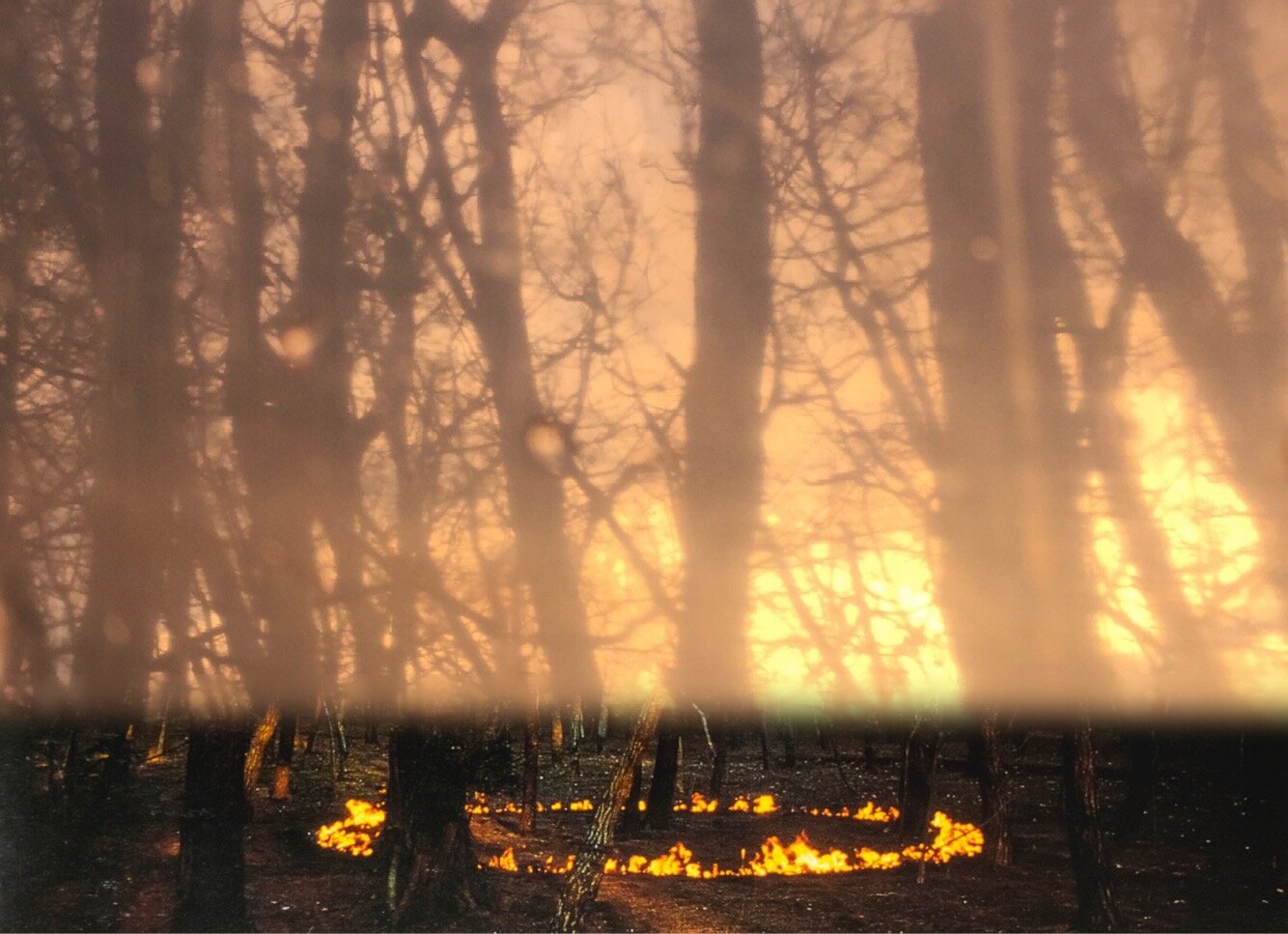Hidden monuments
Exhibition Limerick City Gallery of Art 2019
What remains, Floor installation: Birch, oak and willow, Dimensions variable. Siobhan McDonald LCGA Installation view Hidden Monuments, What remains.
Installation shot, Limerick City Art Gallery - Siobhan McDonald 2019
Hidden Monuments challenged traditional ideas of connections and transmissions between mankind past and present; opening us to the idea of communication through time using the Earth and it’s human-made monuments. Beginning with a series of artistic enquiries on the Black Pig's Dyke (a series of discontinuous man-made linear earthworks in southwest Ulster and northeast Connacht, Ireland), the project quickly progressed into a rumination on the Cairns, standing stones and Megalithic structures that foreshadow our own architectural histories. The project serendipitously coincided with the unprecedented rise in global temperatures in 2018 which magically drew henges in Ireland to the surface of the soil for exploration. This confluence of events informed the work, looking at these sites as portals of time, transmitting messages from an unknown past into our present.
Sound Inscription score
6 metre drawing on antique paper. Following a seam of geology and gold across Ireland. Linear earthworks circa 2000 BC
Installation shot, Limerick City Art Gallery - Siobhan McDonald 2019
Palisade
Pyrolysis (burnt in an environment without oxygen), Dimensions variable
Installation shot, Limerick City Art Gallery - Siobhan McDonald 2019
‘The idea of ritual plays a major part in her process. This new body of work includes film footage of ritual fires, performative pieces and temporary land art McDonald has made on and around the area of the Black Pig’s Dyke. The show will include paintings on 24-carat gold plated copper plates, which she also sometimes burns using a blow torch. They look abstract, distressed, a word she uses when talking about other images she has made. It’s a word that speaks to the fragility and the anxiety inherent in the work. Despite it all, she is optimistic. Her art is not deeply negative, although it is urgent, pensive, and full of thought-provoking beauty.’ wrote art critic Cristín Leach in her 2019 review of the show.
Siobhan McDonald, On-site interventions on The Black Pig’s Dyke on Winter Solstice 2018 and NewGrange during the drought in July 2018.
Leach further describes the materiality of the work as using “gold and copper because they are conductors: ‘I like their ability to reflect and to conduit, they are signalling to us.’ She uses calfskin, ‘because it’s a material used to record Irish history, our earliest weather records were recorded on calfskin.’ She uses charcoal because it seems to join the dots. She asked herself, ‘the first-ever marks made in the world, and the future – what’s the connection? Charcoal is the answer.’”
Borders of one kind or another have been part of the human story for thousands of years. Many of the Neolithic tombs and Bronze Age standing stones may have acted as territorial markers, with natural features also playing an important role.
Previously a complete absence of contemporary historical records relating to the linear earthworks, The Black Pigs Dyke, had hindered understanding of its origins and use. From 2017 onwards, McDonald worked alongside archaeologists on a series of breakthroughs made from a radiocarbon dating programme which uncovered the exact age and context of these site. Siobhan then began to explore the questions that remained unanswered: What was their purpose? What was it that motivated prehistoric societies to go to such enormous efforts to build these monumental structures? How precisely were they built?
The monuments date from a time in history, the years 100 - 200 AD, when Ireland was suffering from unprecedented changes in the weather and these archaeological remains, left in the landscape from Donegal to Co Armagh, point to a collective response and action; the activation of rituals while also communicating ideas of power and status. Whether these were intentionally built as ritual sites or not, the work explores this glimpse of how our ancestors dealt with their climate crisis and asks what we might learn from it to deal with ours.
Siobhan McDonald, Signals, onsite intervention on Black Pig's Dyke. Winter Solstice 2018.




